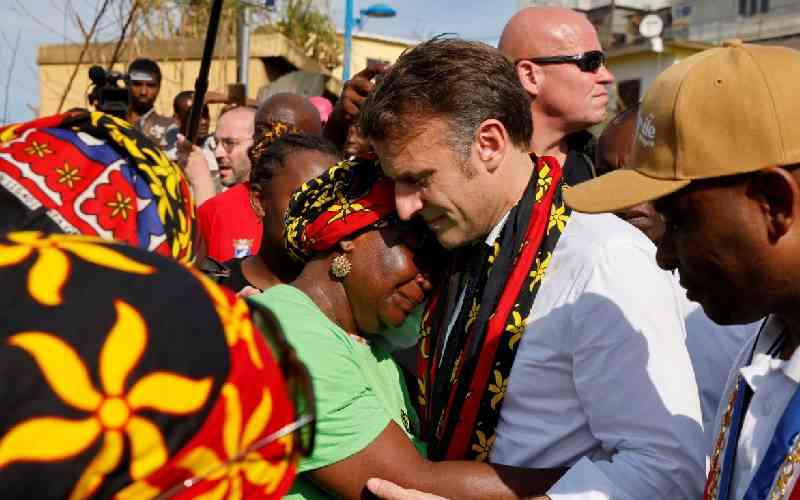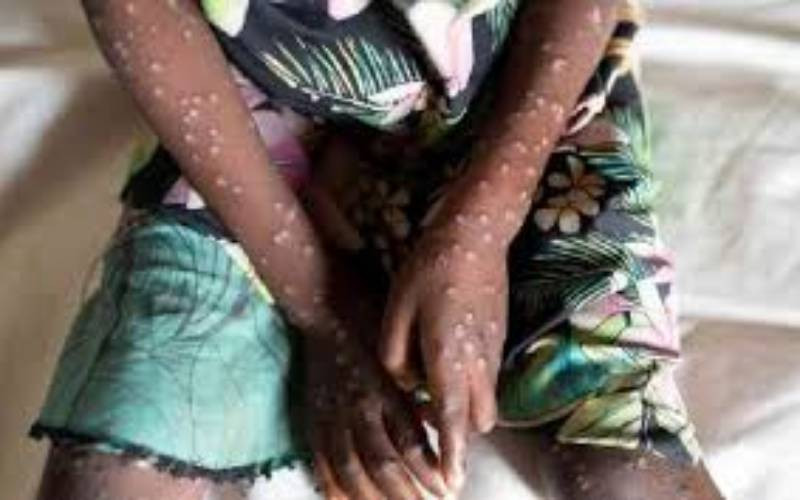A Chinese motorcycle dealer was last month deported from Kenya after a video leaked online showing him making a number of racist comments, igniting outrage across the country. He referred to the Kenyan president and people as ‘monkeys’
In the history of European cultures, the comparison of humans to apes and monkeys was disparaging from its very beginning.
When Plato declared apes ugly in relation to humans — and men apish in relation to gods — this was cold comfort for the apes. It transcendentally disconnected them from their human co-primates. The Fathers of the Church went one step further: Saint Gregory of Nazianzus and Saint Isidore of Seville compared pagans to monkeys.
In the Middle Ages, Christian discourse recognised monkeys and apes as devilish figures and representatives of lustful and sinful behaviour. In the 11th century, Cardinal Peter Damian gave an account of a monkey that was the lover of a countess from Liguria. The jealous monkey killed her husband and fathered her child.
From then on, the sexist manifestation of monkeys was intimately intertwined with its racist dimension. Already Jean Bodin, doyen of the theory of sovereignty, had ascribed the sexual intercourse of animals and humans to Africa south of the Sahara. He characterised the region as a hotbed of monsters, arising from the sexual union of humans and animals.
The history of a narrative by Antonio de Torquemada shows how in this process Africans became demonised and the demons racialised. In the story’s first version (1570), a Portuguese woman was exiled to Africa where she was raped by an ape and had his babies.
One good century onwards, the story had entered the realm of Europe’s great philosophical thought when John Locke in his 1689 essay, Concerning Human Understanding, declared that “women have conceived by drills”. His intellectual contemporaries knew well that the stage for this transgressing love-and-rape-story was Africa because, according to the wisdom of the time, drills lived in Guinea.
In the following centuries, monkeynization would enter into different sciences and humanities. Anthropology, archaeology, biology, ethnology, geology, medicine, philosophy, and, not least, theology were some of the fields. Literature, arts and everyday entertainment also seized on the issue. It popularised its repellent combination of sexist and racist representations.
Animalisation and even bacterialisation are widespread elements of racist dehumanisation. They are closely related to the labelling of others with the language of contamination and disease. Images that put men on a level with rats carrying epidemic plagues were part of the ideological escort of anti-Jewish and anti-Chinese racism.
Africa is labelled as a contagious continent incubating pestilences of all sorts in hot muggy jungles, spread by reckless and sexually unrestrained people. AIDS in particular is said to have its origin in the careless dealings of Africans with simians, which they eat or whose blood they use as an aphrodisiac.
This is just the latest chapter in a long and ugly line of stereotypes directed against different people like the Irish or Japanese, and Africans and African Americans. To throw bananas in front of black sportspeople is a common racist provocation even today.
What, pray, explains this disastrous association of black people defamed as monkeys? A combination of factors might be the cause:
First, there is the prevalence of a variety of great apes in Africa, closest in size to humans. The Asian great ape population is more limited, while in the Americas one finds monkeys, but no apes. Second, the extent of the aesthetic “distance” between whites and blacks, their greater degree from a white perspective of physical “otherness” (deviant not merely in skin colour and hair texture but facial features) as compared to other “nonwhite” races. Third, the higher esteem generally accorded by Europeans to Asian as against African civilizations; and fourth, above all the psychic impact of hundreds of years of racial slavery in modernity, which stamped ‘Negroes’ as permanent sub-persons, natural slaves, in global consciousness.
In addition, Large scale chattel slavery required reducing people to objects. Precisely because of that, it also required the most thorough and systematic kind of dehumanisation in the theorisation of that reality.
Stay informed. Subscribe to our newsletter
Long before post-Darwinian “scientific racism” begins to develop, then, one can find blacks being depicted as closer to apes on the Great Chain of Being. Take mid-19th century America in circles in which polygenesis (separate origins for the races) was taken seriously.
Leading scientists of the day documented what they saw as objective racial hierarchies with illustrations comparing blacks to chimpanzees, gorillas, and orangutans.
Darwin’s revolutionary 1859 work, On the Origin of Species, did not discredit scientific racism but only its polygenetic variants. Social Darwinism, triumphantly monogenetic, would become the new racial orthodoxy. Global white domination was being taken as proof of the evolutionary superiority of the white race.
If it now had to be conceded that we were all related to the apes, it could nonetheless be insisted that blacks’ consanguinity was much closer – perhaps a straightforward identity.
Popular culture played a crucial role in disseminating these beliefs. The average American, European or Asian layperson would be unlikely to have been reading scientific journals. They were going weekly to the movies, including the genre of “jungle movies”. They were following daily comic strips like The Phantom – Africa’s white supercop, the Ghost-who-walks.
The Belgian cartoonist Hergé’s Tintin series, for example, includes the infamous Tintin au Congo book, which likewise depicts Africans as inferior apelike creatures. Unsurprisingly, “macaques” (monkeys) was one of the racist terms used by whites in the Belgian Congo for blacks, as was “macacos” in Portuguese Africa. In his 1960 Independence Day speech, Congolese leader Patrice Lumumba blasted the oppressive legacy of Belgian colonialism (to the astonishment and outrage of the Belgian king and his coterie, who had expected grateful deference from the natives). He is reputed to have concluded: “We are no longer your Monkeys”
The use of monkeys and apes as a racist slur against black people is not yet over, as shown by the furor and outrage by Kenyans over the Chinese national’s remarks. His outbursts indicate the deep entrenchment of racial prejudices and stereotypes.
This does not stop at class boundaries. The internet has overflowed with ape comparisons ever since Barack and Michelle Obama moved into the White House. Even a social-liberal newspaper, like the Belgian De Morgen, has deemed it kind of funny to monkeynize the former First Couple. Cross-class alliances against declassed others are a hallmark of racism.
Today, inspite of globalisation, animalisation remains a malicious and effective instrument of desocialisation and dehumanisation. Monkeynisation is a version of this strategy, which historically manifested a lethal combination of sexism and racism.
— Edwin Wanjawa is a sociology lecturer at the School of Humanities and Social sciences, Pwani University.
 The Standard Group Plc is a
multi-media organization with investments in media platforms spanning newspaper
print operations, television, radio broadcasting, digital and online services. The
Standard Group is recognized as a leading multi-media house in Kenya with a key
influence in matters of national and international interest.
The Standard Group Plc is a
multi-media organization with investments in media platforms spanning newspaper
print operations, television, radio broadcasting, digital and online services. The
Standard Group is recognized as a leading multi-media house in Kenya with a key
influence in matters of national and international interest.
 The Standard Group Plc is a
multi-media organization with investments in media platforms spanning newspaper
print operations, television, radio broadcasting, digital and online services. The
Standard Group is recognized as a leading multi-media house in Kenya with a key
influence in matters of national and international interest.
The Standard Group Plc is a
multi-media organization with investments in media platforms spanning newspaper
print operations, television, radio broadcasting, digital and online services. The
Standard Group is recognized as a leading multi-media house in Kenya with a key
influence in matters of national and international interest.





